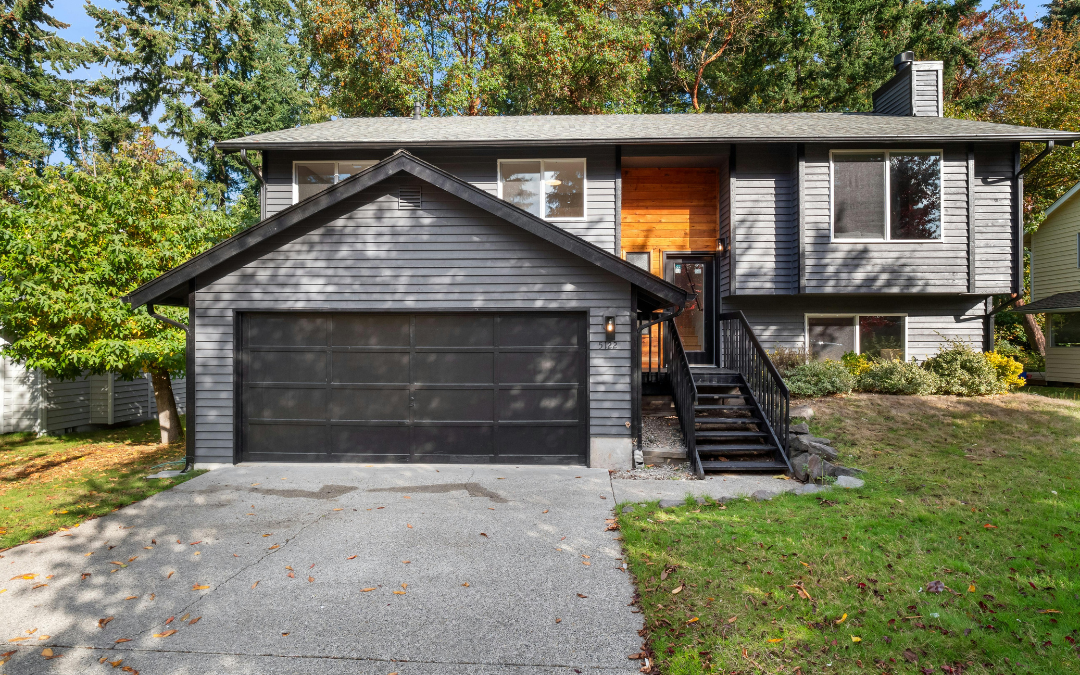Is Your Garage Door in Good Shape? Here’s a Simple Maintenance Checklist

Will This Garage Door Maintenance Checklist Help Keep Your Garage Door in Good Shape?
Are you a homeowner dealing with a garage door that’s giving you trouble—or maybe you’re just trying to prevent issues before they start? Either way, you’re in the right place. Your garage door is one of those things you don’t think about until it stops working, but here’s the catch: if you wait for a problem to pop up, you might be looking at costly repairs (or worse).
Think about it. If your door isn’t properly maintained, small issues like rusty steel panels or warped wood can snowball into bigger headaches. And let’s not forget: a worn-out garage door isn’t doing your home’s curb appeal any favors. Whether it’s a sleek steel door starting to rust or a charming wooden one showing signs of rot, neglect takes its toll over time.
The good news? A little maintenance goes a long way. In this blog, you’ll learn exactly how to keep your garage door in great shape—without spending a fortune or hours of your time. So, if you’re ready to roll up your sleeves and save yourself from unexpected headaches down the road, let’s dive into this super simple checklist. Trust me, your future self will thank you!
1. Get to Know Your Garage Door
Before you start, take a moment to really understand your garage door. What’s it made of? Steel, wood, aluminum, or something else? Steel doors are tough but prone to rust, especially in humid or coastal areas. Wooden doors, while charming, are vulnerable to warping, rotting, or even cracking if left unsealed. Aluminum doors are lightweight and low-maintenance but can dent more easily than their counterparts.
By identifying your door’s material, you’ll know what potential issues to watch for and how to address them. For example, a steel door might need a rust-preventative treatment, while a wooden one will benefit from regular sealing or painting. It’s like getting to know a friend—the better you understand it, the better you can care for it.
2. Clean the Area Around Your Garage Door
Take a step back and look at the space surrounding your garage door. Are there objects like tools, bikes, or sports equipment cluttering the area? Perhaps some overgrown shrubs brushing against the sides? Clearing this space isn’t just about aesthetics; it’s also about safety and functionality.
Debris or obstacles near the door can interfere with its movement, leading to unnecessary wear and tear on the tracks and rollers. Plus, a clutter-free zone reduces the risk of accidental damage, whether it’s from you or your kids’ basketball bouncing in the wrong direction. Make it a habit to keep this area tidy—it’ll make your life easier in more ways than one.
3. Lubricate Moving Parts
Let’s talk about one of the easiest yet most impactful steps you can take: lubrication. Your garage door has a lot of moving parts—rollers, tracks, hinges, and springs—all working together to lift and lower the door smoothly. Without proper lubrication, these components can start to grind against each other, creating friction, noise, and premature wear.
Use a high-quality garage door lubricant (not WD-40, which isn’t designed for this job) and apply it sparingly to the rollers, tracks, hinges, and springs. A little goes a long way, so don’t overdo it. And remember to keep your fingers well clear of the moving parts—those mechanisms can be dangerous if mishandled.
4. Tighten the Hardware
Your garage door moves up and down several times a day, which means its hardware takes a lot of strain over time. Bolts and screws can gradually loosen, leading to wobbly tracks, noisy operation, or even a door that feels unsteady.
Grab a wrench and go over all the nuts, bolts, and screws, paying close attention to the brackets and hinges. If you notice anything loose, tighten it up. This simple step can prevent bigger issues like a misaligned door or damaged tracks. Think of it as giving your garage door a mini tune-up—it keeps everything running like clockwork.
5. Clean the Tracks
The tracks your garage door runs on are like the lanes on a highway—clear and smooth is the goal. Over time, dust, dirt, and even small debris like pebbles can build up, making it harder for the door to move. If ignored, this can lead to jerky movements or strain on the opener.
Use a clean cloth or a soft brush to remove dirt and grime from the tracks. If they’re particularly dirty, mix some mild detergent with warm water and give them a good scrub. Once you’re done, wipe them dry to prevent any leftover moisture from causing rust. Keeping the tracks clean ensures your door glides effortlessly every time you use it.
6. Check Batteries in Remotes and Keypads
Few things are as frustrating as pulling into your driveway, hitting the remote button, and realizing nothing is happening. Dead batteries are a small but annoying problem that can easily be avoided. While you’re going through your maintenance routine, take a moment to check the batteries in your remote and keypad.
Signs it’s time for a replacement include having to press the button multiple times or noticing the remote works only when you’re unusually close to the door. Swap out the batteries proactively, and you won’t have to deal with the frustration of being locked out—or locked in—unexpectedly.
7. Wash Your Garage Door Regularly
Your garage door is essentially a giant billboard for your home, and it takes a beating from the elements. Dust, dirt, bird droppings, and even pollution can build up over time, dulling its appearance and potentially damaging the finish.
Grab a bucket of warm, soapy water and a sponge or soft cloth, and give your door a good scrub. For stubborn spots, a soft-bristled brush can help without scratching the surface. Rinse thoroughly and let it dry. Regular cleaning not only keeps your door looking sharp but also prevents corrosion or other damage caused by dirt buildup.
8. Paint or Seal Wooden Doors
If you’ve got a wooden garage door, it’s important to keep it sealed and protected. Wooden doors are beautiful, but they’re also more susceptible to damage from moisture, sunlight, and pests. Every couple of years, inspect the finish. If you notice peeling paint or a worn sealant, it’s time for a refresh.
Repainting or resealing isn’t just about looks—it’s about prolonging the life of the door. A fresh coat of paint or sealant acts as a barrier against the elements, helping your door withstand rain, snow, and harsh UV rays. It’s a little effort that pays off in the long run.
Your garage door is like the unsung hero of your home—always there, always working hard, and rarely asking for much in return. But a little TLC can make all the difference in keeping it reliable, safe, and looking sharp. By sticking to this simple maintenance checklist, you can avoid those annoying squeaks, unexpected breakdowns, and costly repairs while extending the life of one of your home’s most essential features. Plus, let’s face it, there’s something so satisfying about a garage door that glides open effortlessly and quietly, almost like it’s saying, “Thanks for taking care of me.” So why not carve out a couple of hours this weekend to give it the attention it deserves? Your future self—and your wallet—will definitely thank you for it. Happy maintaining!
Think it’s time to give your garage door some TLC? At Lexington Gutters & Exterior, we’re happy to help you get it in top shape. Reach out for a free estimate, and we’ll make sure your garage door runs like new—without the hassle!
